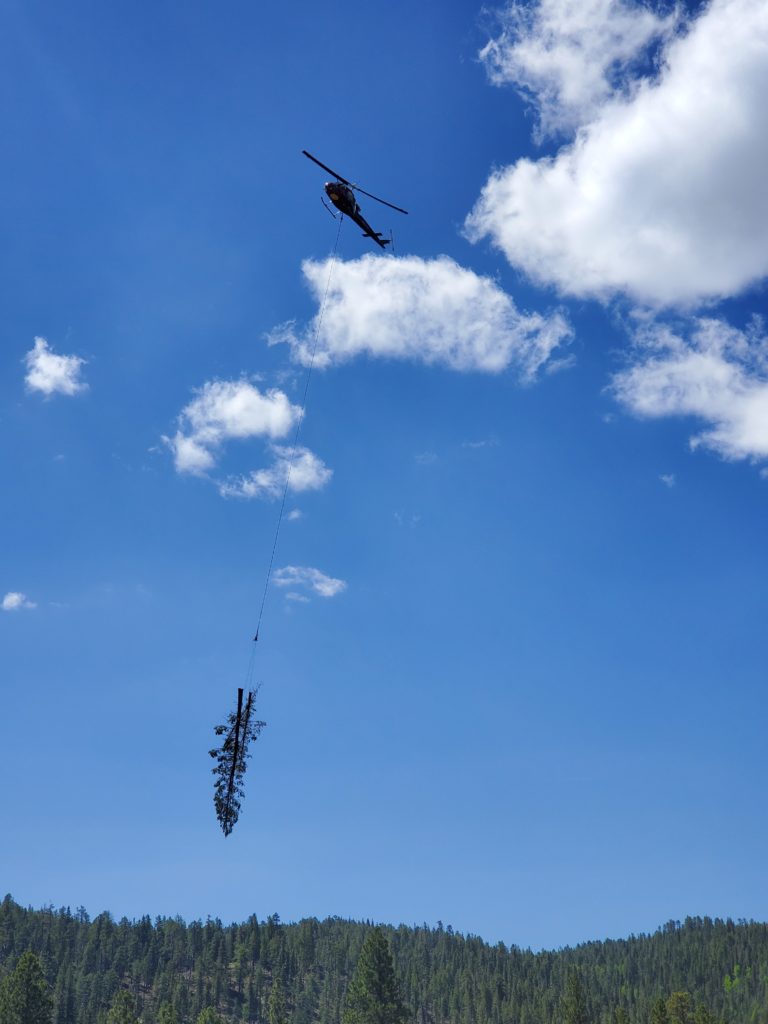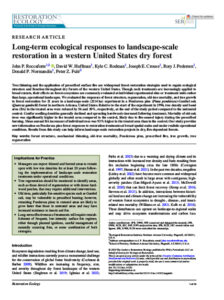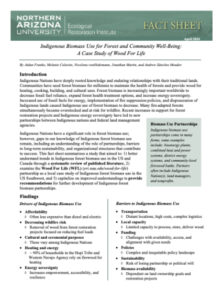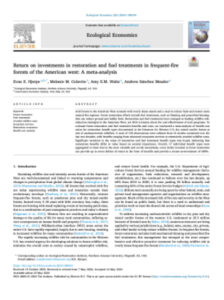Forest Operations & Biomass Utilization
Forest operations apply a variety of forest harvesting systems and processes to achieve sustainable forest management. Traditionally, wood production has been the main objective of forest harvesting and transportation operations, supplying raw materials (i.e., logs and wood chips) to the forest products manufacturing sector. While this is still an important objective today, forest operations are being used more as a tool to accomplish the goals of forest restoration.
Some forest restoration goals are:
- restoration of ecosystem function and stand condition improvement
- controlling the spread of insects and pests
- enhancement of wildlife/fish habitats and biodiversity
- increased watery quality, yield, and supply
- removal and utilization of non-native species
- wildland fire hazard reduction
Small-diameter trees and forest residues, referred to as “biomass,” generated as a result of fire hazard reduction thinning and restoration treatments currently have little economic use. Converting this biomass into high-value products and efficiently marketing them for revenue is key to solving the fire hazard problem not only in Arizona, but throughout much of the western US. One of the main priorities for the Forest Operations and Biomass Utilization unit at ERI is to assist in the development of forest products manufacturing facilities that increase the value of manufactured products from small-diameter trees and biomass. To see existing forest products manufacturing facilities in Arizona and New Mexico, visit our Forest Industry Locator Map.

Long-term ecological responses to landscape-scale restoration in a western United States dry forest
Tree thinning and prescribed surface fire are common forest restoration strategies in the dry forests of the western United States. These treatments are often assessed at small scales rather than across large areas. This study evaluated forest structure, regeneration, old-tree mortality, and tree growth over 21 years in a large (2114 ha) Ponderosa pine-Gambel oak forest in northern Arizona. By the end of the study, tree density and basal area in the treated area were reduced by 56% and 38%, respectively, compared to the untreated control. Conifer seedling densities generally declined while hardwood sprouting increased post-treatment. Old oak tree mortality was higher in the treated area, likely due to fire injury. The mean annual basal area increment of individual trees was 93% higher in the treated area than in the control. These findings offer valuable insights for large-scale restoration efforts in dry, fire-dependent forests.
Return on investments in restoration and fuel treatments in frequent-fire forests of the American west: A meta-analysis
Arid forests in the American West are overly dense and need fuel reduction and fire regime restoration. Forest restoration efforts, such as thinning and prescribed burning, aim to reduce wildfire risks. Despite their importance, the cost-effectiveness of these programs is not well understood. This study conducted a meta-analysis of 120 observations from 16 studies over the past two decades to evaluate the benefits and costs of forest restoration and fuel treatments. Results showed significant variation in benefits, from enhanced ecosystem services to avoided wildfire costs. In high-value, at-risk watersheds, every dollar invested in restoration yielded up to seven dollars in benefits, achieving a 600% return on investment.



